| dc.contributor.editor | Hotson, Howard | |
| dc.contributor.editor | Wallnig, Thomas | |
| dc.date.accessioned | 2019-04-25T12:38:28Z | |
| dc.date.available | 2019-04-25T12:38:28Z | |
| dc.date.issued | 2019 | |
| dc.identifier.uri | https://doi.org/10.17875/gup2019-1146 | |
| dc.format.extent | 470 | |
| dc.format.extent | 470 | |
| dc.format.medium | Print | |
| dc.language.iso | eng | |
| dc.relation.isreferencedby | Rezensionsforum "literaturkritik.de", 01/2020@ https://literaturkritik.de/public/rezension.php?rez_id=26336 | |
| dc.relation.isreferencedby | Journal of Historical Network Research, 6(1) 2021@ https://doi.org/10.25517/jhnr.v6i1.100 | |
| dc.rights.uri | http://creativecommons.org/licenses/by-sa/4.0/deed.de | |
| dc.subject.ddc | 900 | |
| dc.title | Reassembling the Republic of Letters in the Digital Age | |
| dc.title.alternative | Standards, Systems, Scholarship | |
| dc.type | anthology | |
| dc.price.print | 55,00 | |
| dc.identifier.urn | urn:nbn:de:gbv:7-isbn-978-3-86395-403-1-0 | |
| dc.description.print | Hardcover, 17x24 | |
| dc.subject.division | peerReviewed | |
| dc.relation.isbn-13 | 978-3-86395-403-1 | |
| dc.identifier.articlenumber | 8101964 | |
| dc.identifier.intern | isbn-978-3-86395-403-1 | |
| dc.subject.bisac | HIS000000 | |
| dc.subject.vlb | 550 | |
| dc.subject.bic | HB | |
| dc.description.abstracteng | Between 1500 and 1800, the rapid evolution of postal communication allowed ordinary men and women to scatter letters across Europe like never before. This exchange helped knit together what contemporaries called the ‘respublica litteraria’, a knowledge-based civil society, crucial to that era’s intellectual
breakthroughs, formative of many modern values and institutions, and a potential cornerstone of a transnational level of European identity.
Ironically, the exchange of letters which created this community also dispersed the documentation required to study it, posing enormous difficulties for historians of the subject ever since. To reassemble that scattered material and chart the history of that imagined community, we need a revolution in digital communications. Between 2014 and 2018, an EU networking grant assembled an interdisciplinary community of over 200 experts from 33 different countries and many different fields for four years of structured discussion. The aim was to envisage transnational digital infrastructure for facilitating the radically multilateral collaboration needed to reassemble this scattered documentation and to support a new generation of scholarly work and public dissemination. The framework emerging from those discussions – potentially applicable also to other forms of intellectual, cultural and economic exchange in other periods and regions – is documented in this book. | |
| dc.subject.eng | letters | |
| dc.subject.eng | respublica litteraria | |
| dc.subject.eng | Europe | |
| dc.subject.eng | transnational digital infrastructure | |
| dc.notes.vlb-print | lieferbar | |
| dc.intern.doi | 10.17875/gup2019-1146 | |
| dc.identifier.purl | http://resolver.sub.uni-goettingen.de/purl?univerlag-isbn-978-3-86395-403-1 | |
| dc.identifier.asin | 3863954033 | |
| dc.subject.thema | NH | |



